Swiss cycle soldiers
TEXT: ERIC BRYAN
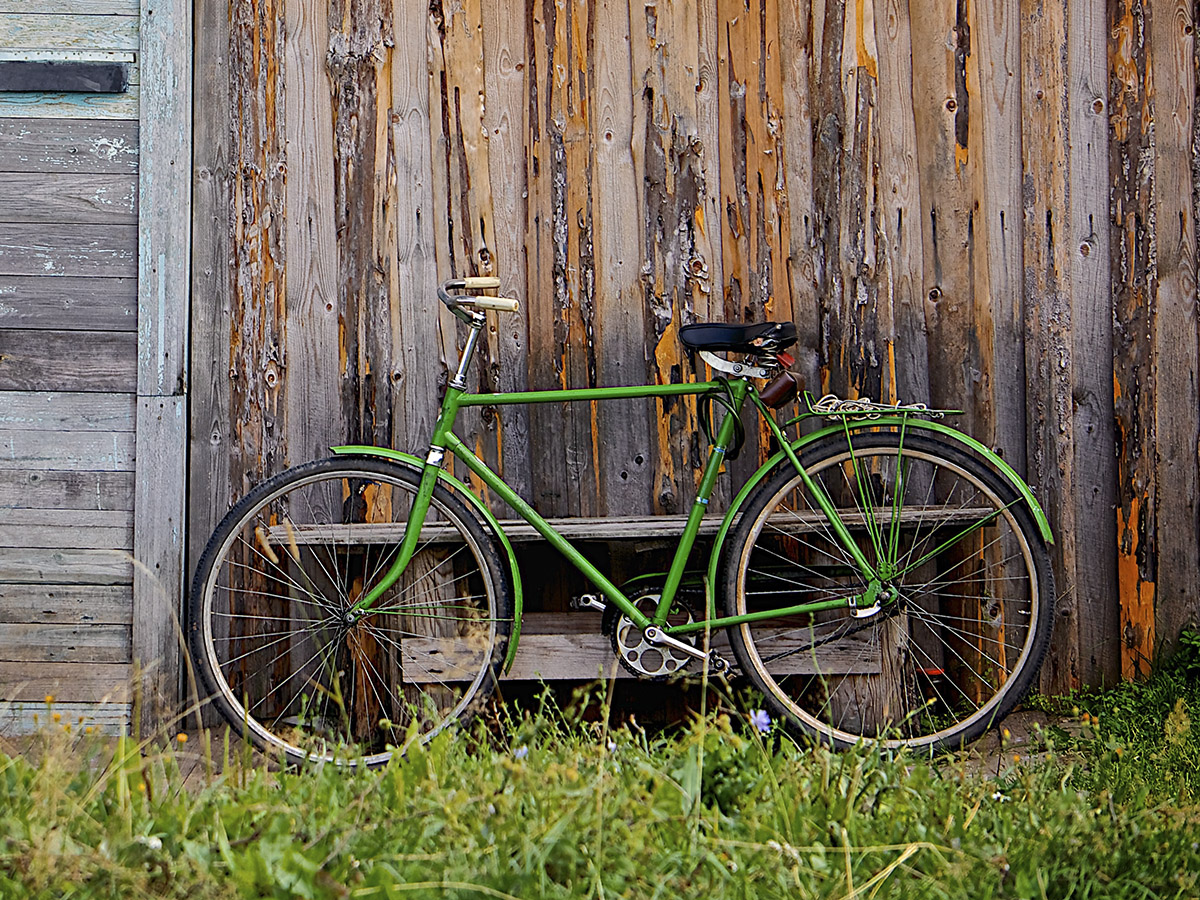
For almost five centuries the Swiss have adhered to a policy of armed neutrality. Switzerland observes the Roman militia system based on the procedure used in Republican Rome whereby all able-bodied men serve active and reserve duty. There were bombings and border skirmishes in Switzerland during both world wars, but the country hasn’t been at war since being conquered by Napoleon in 1798. Due to its geography, Switzerland is naturally defensible, and for 100 years bicycles were an important part of the equipage of the Swiss Army.
The Swiss Army bicycle troops were founded by Officer Alphons Pfyffer, who arranged bike trials in 1887. The Army adopted bicycles in 1888, employing them as courier vehicles, and formed bicycle troops in 1891. A reason for creating Swiss cycling formations was for the preservation of the cavalry resources.

Number plate on an MO-05 bike. Photo: Peter One, Wikimedia Commons
Caesar wrote that a column could move about 20 Roman miles (29km) per day, but in the late 19th century the introduction of bicycle infantry extended that range to 160km per day. The British used bicycle brigades in the Boer campaigns, and the Swiss tested an infantry bike similar to the British Raleigh DL-1 in 1904. This led to the MO-05 bicycle, introduced in 1905.
The MO-05 was built variously by Schwalbe, Cäsar, Cosmos and Condor for the Swiss Army. Painted matte black or military green, most had a frame-fitted carrying case for maps, documents and equipment. The bicycles had Dunlop tyres, and could pull a trailer which would haul cargo or a stretcher. Early models had lanterns, while later bikes were fitted with a dynamo-driven headlamp. A rear rack and mudguards were standard, and a small hold-all attached to the back of the seat tube contained enough tools to strip the bike in the field. Clipped to the carrying case or top tube was a pump, and a bag attached to the handlebars. Some bikes had metal panniers for carrying ammunition.
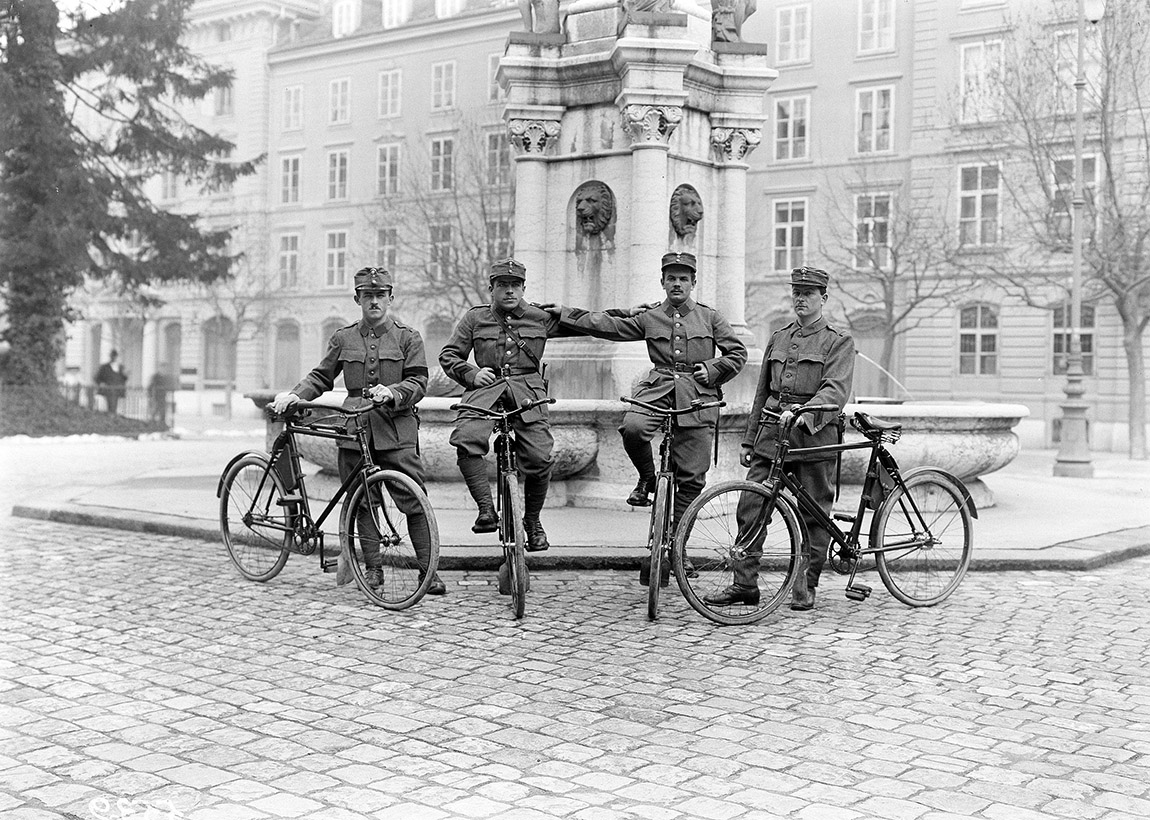
Swiss Army cyclists with MO-05 bikes in front of the Federal House, Bern, Switzerland, 1914-18. Photo: Photographer unknown, public domain, Wikimedia Commons
The MO-05 initially had a rear coaster brake and a rod-operated front spoon brake. In 1941, manufacturers added a cable-operated rear drum brake. The bike weighed 22.5kg un-laden. There were many variations of the MO-05 designed for different duties. The army stripped some of the MO-05s down to the bare essentials to function as messenger bikes.
The Swiss Army had several bicycle infantry regiments. They operated in the lowlands, the Swiss Alps, on and off road, and in summer heat and winter freeze, manoeuvring on almost any terrain. The bicycle regiments were not tasked with logistical supply duties or offensive reconnaissance as had been done during World War I, but were mainly a quick-strike defensive unit. In this capacity, they would hurry ahead to secure terrain such as a forested hillside or a village at the entrance to a pass or valley. The bicycle infantry guarded the valleys from Lake Constance to Lake Geneva. From whatever direction Switzerland would have faced invasion, bicycle regiments were appointed to swiftly and quietly cover urban and rural lands in order to ambush motorised intruders.
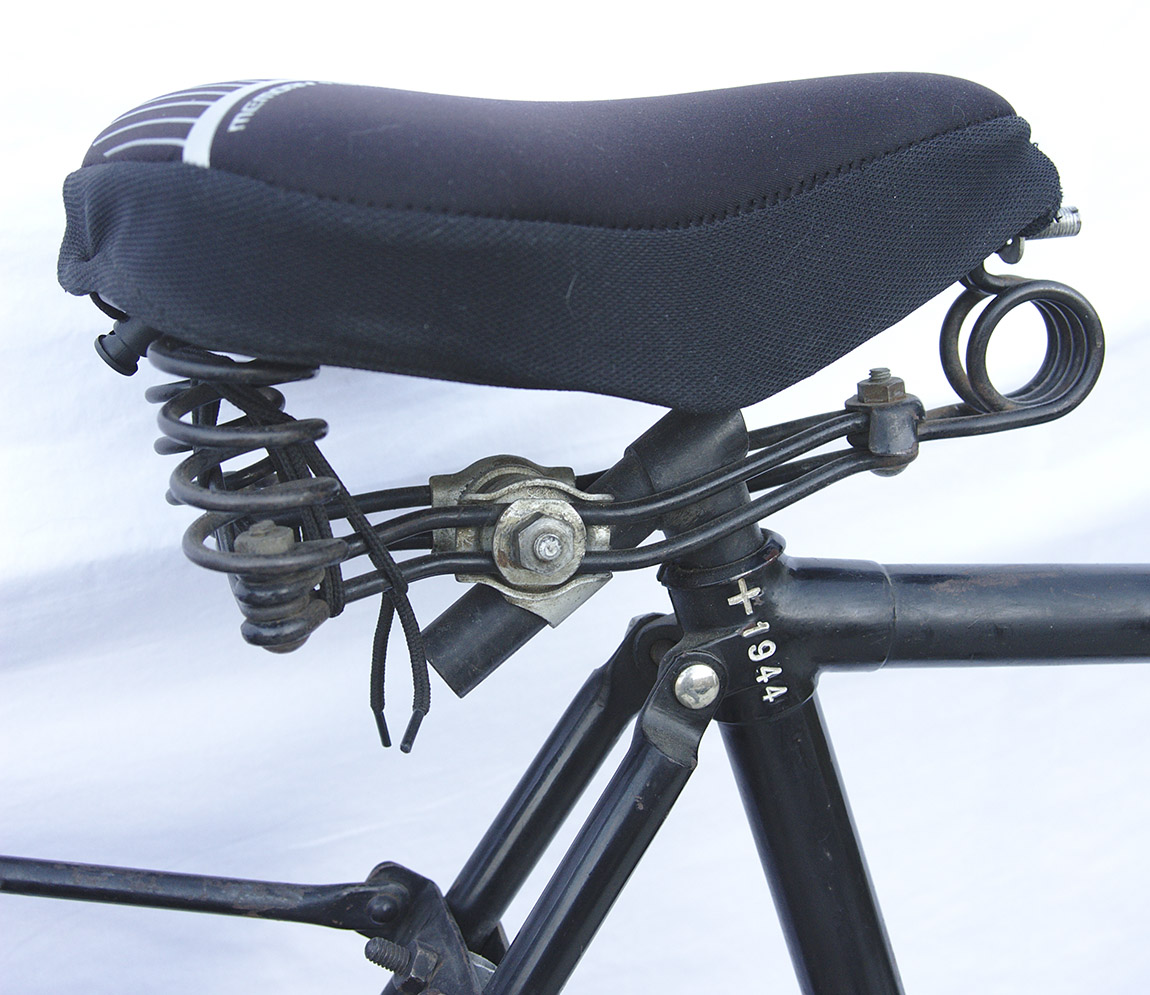
Swiss cross and date stamp on an MO-05. This bike has a new replacement saddle and seat post. Photo: Andrew Toskin, Wikimedia Commons
Their mobility was key: The cyclists could be deployed rapidly, and bicycle infantry was better suited than motorised forces to operating in forested or built-up areas. Switzerland’s rugged terrain can be challenging or impossible for motorised vehicles to negotiate, while its fog and blizzards prevents the use of helicopters. Bicycles, though, could be employed when visibility was nearly zero. A bicycle company could move almost silently, without the need for petrol or diesel, up to 100km in a single night.
After World War II the Swiss Army retained its cycling infantry. In 1949 they added three more battalions. They formed part of the light brigades, and were attached to the mechanised divisions in 1962. By 1972 the Swiss Army had retired its cavalry. As of 1986, there were three regiments comprising several thousand troops. Each regiment was made up of three cycle battalions. By 1995 there was one regiment.
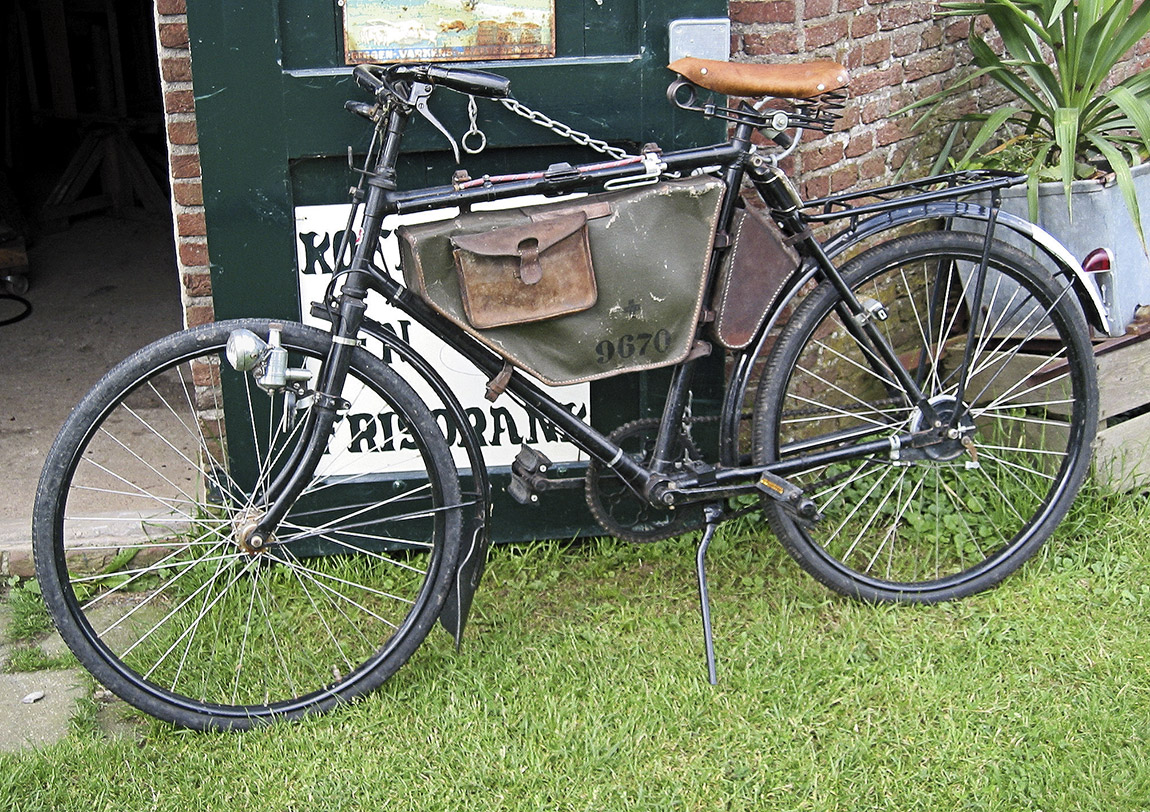
Swiss Army MO-05 bicycle. Note the rear rack, frame-fitted carrying case, and dynamo headlamp. Photo: Rasbak, Wikimedia Commons
The bicycle infantry was an elite force. Every applicant had to be very fit and pass difficult entrance exams in order to qualify. The first three months of training had the soldiers take daily bicycle tours, increasing the distance each day. The first training ride was 20km; at week nine there was a 200km cycle march on country roads and through forest. In one stage of the training, the riders were intentionally sleep-deprived.
The cycle infantry conducted normal, speed, and forced marches. The normal speed was 12-15km/h, with a 3km/h variation allowing for diverse terrain. A forced march was at normal speed, but of greater duration than usual. Speed marches were up to 25km in length. The cycle units were required to cover up to 200km in 24 hours.
The MO-05 was replaced by the 7-speed MO-93 in 1993. Built by Villiger and Condor, the bike had a front rack and a dynamo-powered headlamp. It was fitted with mountain bike-type handlebars and hydraulic rim brakes. The minimum weight was 21.5kg. The bike could carry a 60mm mortar and rounds, a machinegun or an antitank gun. The Swiss Bicycle Infantry was finally phased out in 2003.
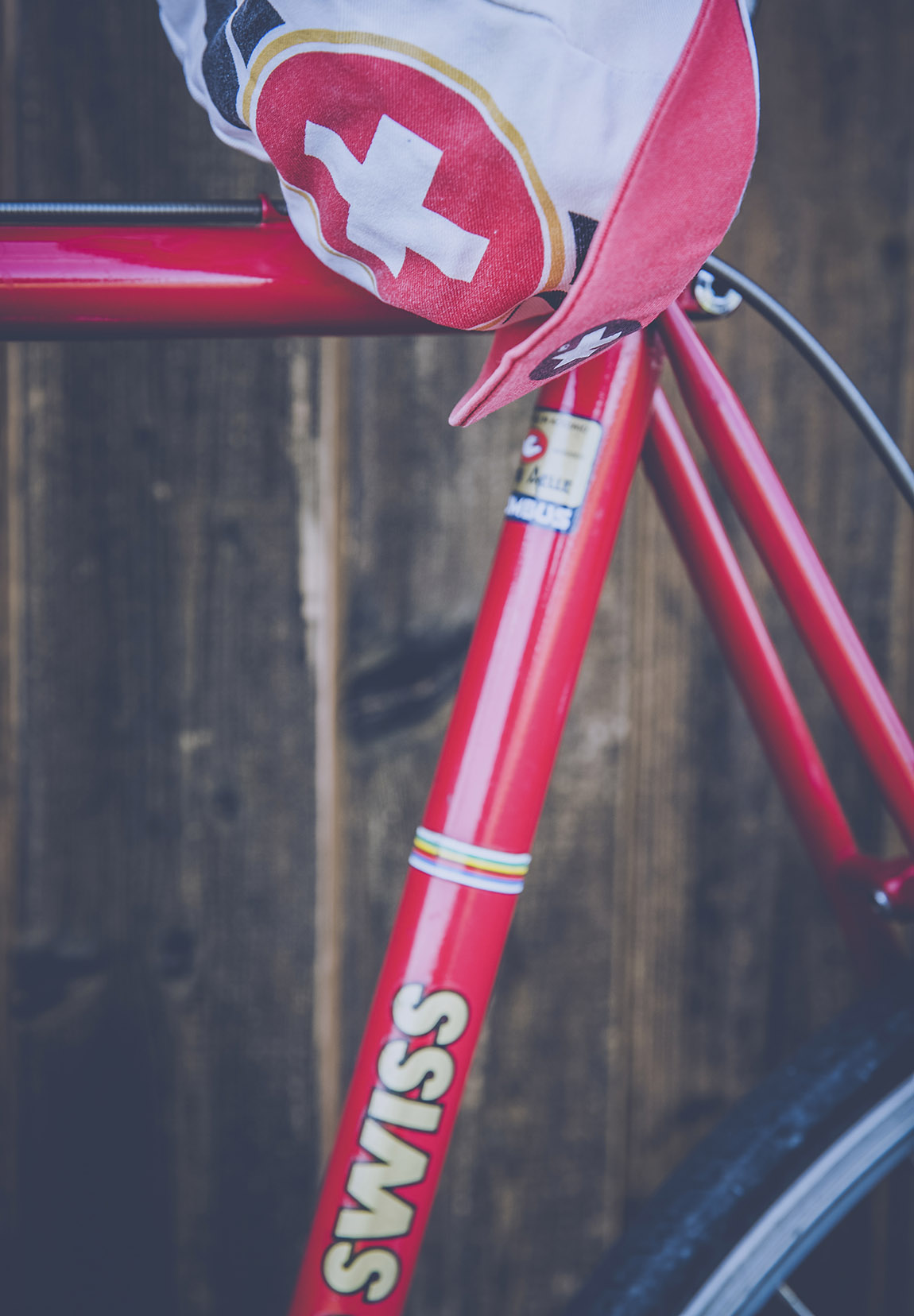
Photo: Unsplash
Subscribe to Our Newsletter
Receive our monthly newsletter by email




